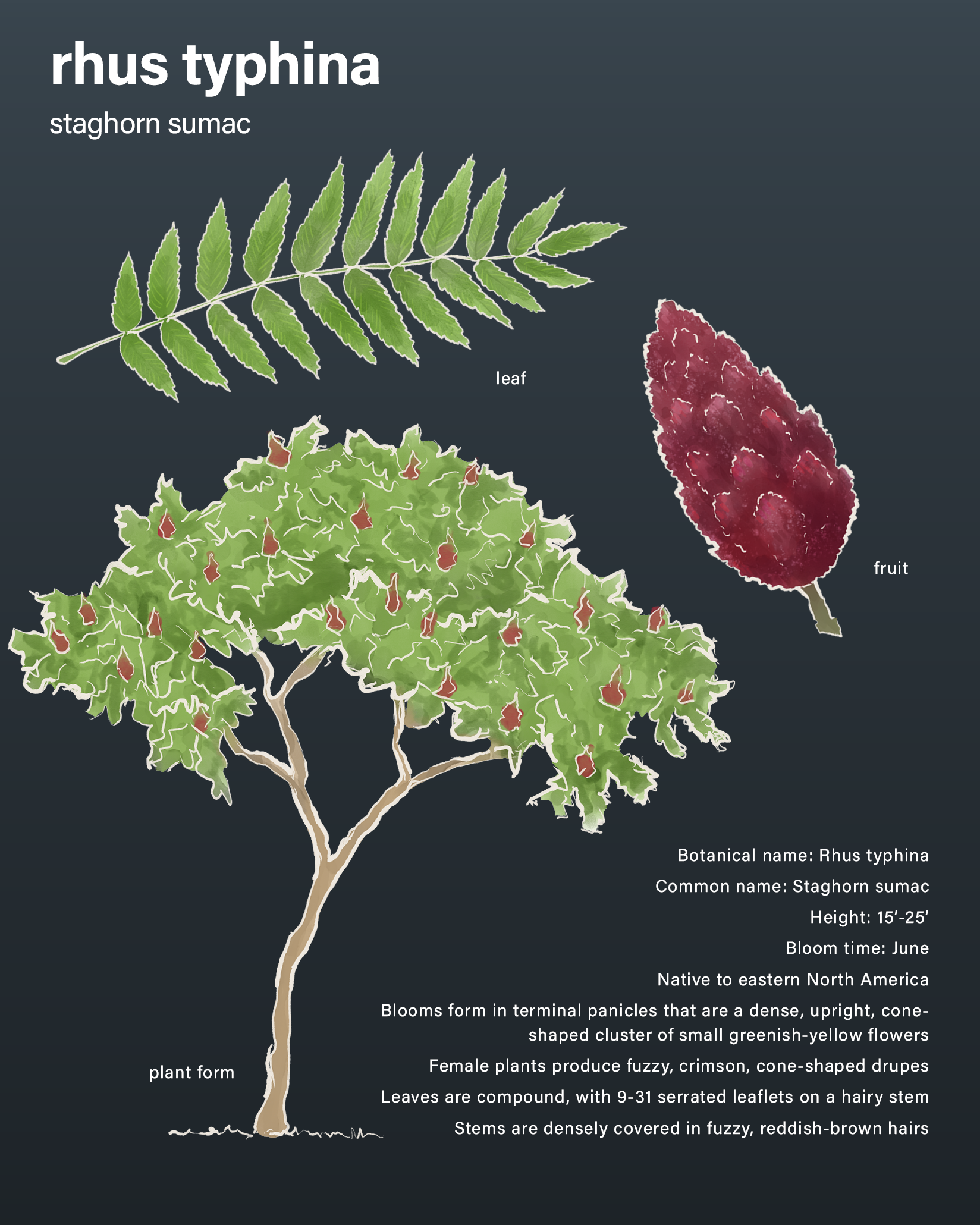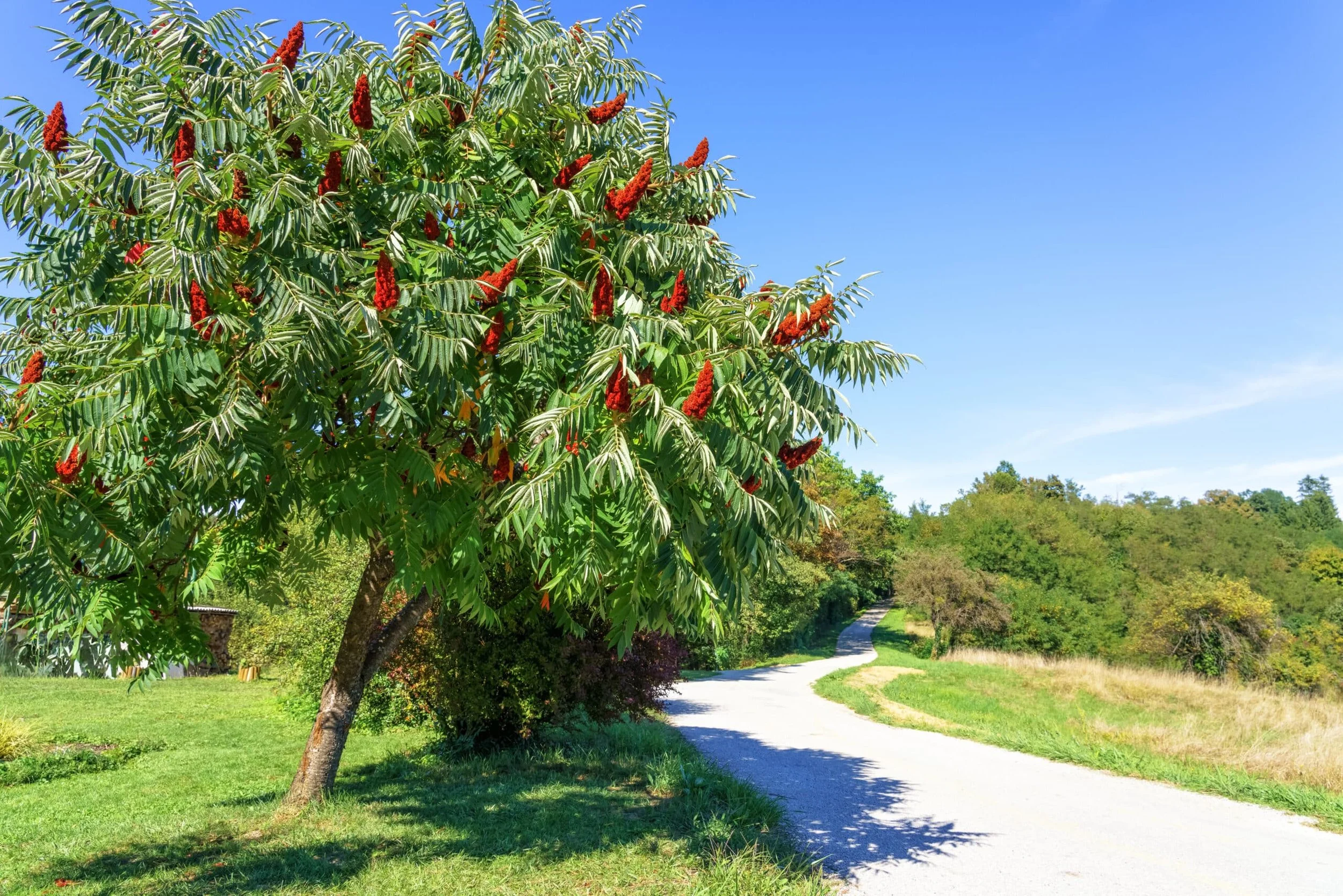Staghorn Sumac: Morphology, Ecology, and Adaptations
Rhus typhina, commonly known as Staghorn Sumac, is a native North American plant species recognized for its ecological utility and unique morphological characteristics. This deciduous shrub or small tree reaches heights of 15–25 feet, distinguishing itself through its dense, upright form.
The plant's name is derived from the velvety, reddish-brown hairs that cover its young stems, a feature that anatomically resembles the velvet on a stag's antlers. Its compound leaves, composed of 9–31 serrated leaflets, undergo a notable seasonal transformation. In autumn, they display a significant shift to vibrant shades of orange, red, and purple, a change attributed to the breakdown of chlorophyll and the expression of anthocyanin pigments.
Flowering occurs in June, with the plant producing dense, conical clusters of greenish-yellow flowers. These flowers serve as a valuable nectar source, attracting a variety of pollinator species. Following pollination, female plants develop fuzzy, crimson drupes—or fruit clusters—that can reach up to 8 inches in length. These persistent fruit clusters remain on the plant throughout the winter, providing a critical food source for birds and small mammals during periods of scarcity.
Beyond its aesthetic and reproductive functions, Staghorn Sumac plays a vital role in ecological systems. Found in disturbed areas like roadsides, rocky slopes, and open fields, it exhibits a high tolerance for a wide range of soil conditions, preferring dry, well-drained environments. Its suckering habit, or ability to spread through root systems, makes it highly effective for soil stabilization and erosion control. This characteristic, while beneficial for land management, necessitates careful consideration in designed landscapes where its spread may be undesirable. The plant's ability to form dense thickets also provides crucial shelter and nesting habitats for wildlife.
The plant's fruits also have a history of human use. The tart red drupes can be steeped in water to create a beverage similar to lemonade, a practice long documented in traditional ecological knowledge.
Ultimately, Rhus typhina is a prime example of a native species that integrates ecological function with distinct form. Its resilience, role in supporting biodiversity, and practical applications make it a subject worthy of study in both botany and landscape ecology.


